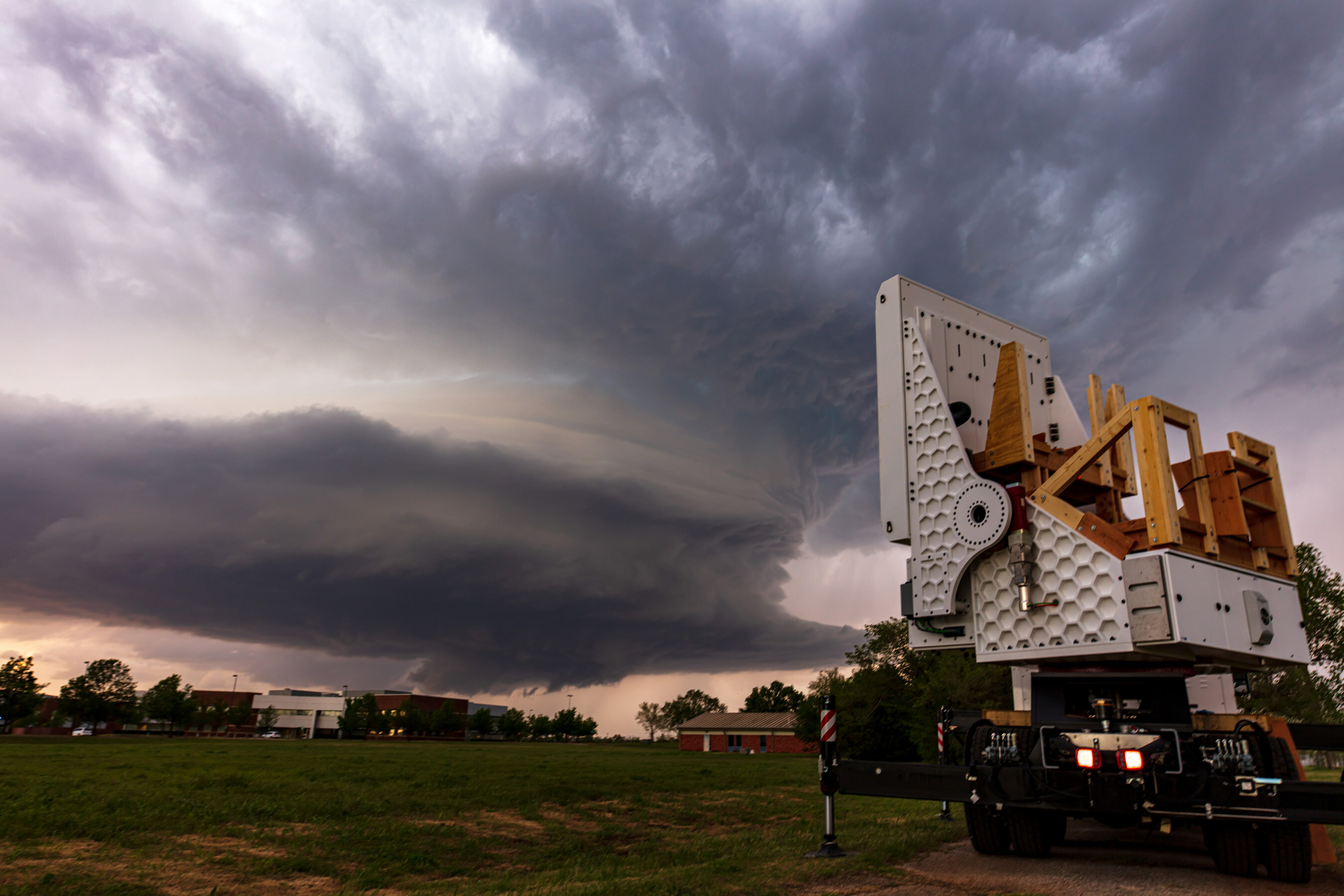University Of Oklahoma Deploys Globe'Second Virtually Advanced Atmospheric Condition Radar
The University of Oklahoma has developed and forthwith deployed the most advanced atmospheric condition radar inward the globe. Led past a squad of engineers and weather experts, too with funds from NOAA'second National Severe Storms Laboratory, the Advanced Radar Research Center at OU has launched "Horus," an all-digital polarimetric phased array radar capable of obtaining information with unprecedented character as well as temporal resolution to aid understand as well as predict the formation of severe weather.

The Horus organization is used to notice many kinds of weather condition events, from intense rain, damaging winds, hail, lightning, in addition to tornadoes. By positioning the radar about storm systems, the ARRC squad tin capture high-resolution data that no ane inwards the earth has ever seen.
The current configuration of the Horus radar consists of up to 1,600 individual radiating elements mounted on a truck for mobile function that can live deployed to scan the skies inward any atmospheric condition condition.
One of the master advantages of the mobile Horus radar is its power to get much closer to storms. In doing then, researchers tin increase the resolution in addition to information quality, capturing terabytes of data inwards minutes. And, because of weather condition-processing algorithms, Horus can produce actionable information that volition help scientists empathize severe atmospheric condition formation.
The factors that make the Horus system superior are the speed at which it tin can scan the heaven too its adaptability. Compared to Doppler radar, Horus is changing the game inwards conditions observations. Learn more than at ou.edu/research
SOURCE University of Oklahoma

"We like a shot have an extremely advanced mobile radar system that tin live sent into the field to gather information on extreme atmospheric condition events," Robert Palmer, executive director of the OU Advanced Radar Research Center, said.
The Horus organization is used to notice many kinds of weather condition events, from intense rain, damaging winds, hail, lightning, in addition to tornadoes. By positioning the radar about storm systems, the ARRC squad tin capture high-resolution data that no ane inwards the earth has ever seen.
"This ARRC team is developing amazing engineering that is going to change the time to come of weather observations. I'k and so proud of what OU'sec radar plan is doing," said OU Vice President for Research and Partnerships Tomás Díaz de la Rubia.
The current configuration of the Horus radar consists of up to 1,600 individual radiating elements mounted on a truck for mobile function that can live deployed to scan the skies inward any atmospheric condition condition.
One of the master advantages of the mobile Horus radar is its power to get much closer to storms. In doing then, researchers tin increase the resolution in addition to information quality, capturing terabytes of data inwards minutes. And, because of weather condition-processing algorithms, Horus can produce actionable information that volition help scientists empathize severe atmospheric condition formation.
The factors that make the Horus system superior are the speed at which it tin can scan the heaven too its adaptability. Compared to Doppler radar, Horus is changing the game inwards conditions observations. Learn more than at ou.edu/research
SOURCE University of Oklahoma









